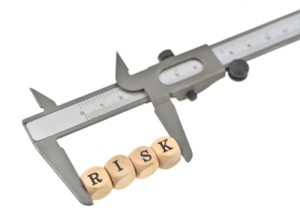 In any business operation there’s an inherent amount of risk involved. This can be something as simple as the need to hire employees as your business expands, right through to the threat of a potential cyber attack. The truth is that when you run a business you naturally open yourself up to levels of risk. This may be on a small scale at first, but nonetheless it’s unavoidable.
In any business operation there’s an inherent amount of risk involved. This can be something as simple as the need to hire employees as your business expands, right through to the threat of a potential cyber attack. The truth is that when you run a business you naturally open yourself up to levels of risk. This may be on a small scale at first, but nonetheless it’s unavoidable.The good news is that after undergoing a security, risk, and vulnerability assessment, businesses will be able to identify with that risk and have a good understanding of the vulnerability to that risk. In other words, a risk and vulnerability assessment simply highlights those factors in a more objective way. That’s all well and good, but how is it carried out?
There are a number of distinct approaches to analysing risk, however essentially they can be broken down into two different types. These are quantitative and qualitative risk assessments. Let’s take a closer look at each…
Quantitative risk assessments
This approach employs two fundamental areas –
The probability of an event occurring and
The estimated losses in cash, should the unfortunate event occur
Events can be ranked in order of risk by multiplying the potential monetary loss known as the Annual Loss Expectancy (ALE) by the probability of that loss occurring.
The problem however is that while ranking risk in this way may seem like a great way to deal with issues, it relies heavily on the probability factor and in most cases this is rarely precise. In fact, in certain cases it can even promote complacency.
All that said, many businesses have successfully deployed anti-risk strategies using this method.
Qualitative risk assessments
This is a more widely used approach to risk assessment and is arguably more accurate because it doesn’t rely on probability factors. Instead qualitative assessments make use of a number of salient factors. These include…
Threats – These are the type of threats possible and include theft, cyber attack, stock or merchandise damage, fire, flooding etc and are present in just about everything that your business does.
Vulnerability – The vulnerability factor takes into account how a threat can be escalated. For example, your business could be vulnerable to fire because of the presence of flammable materials. Alternatively because you don’t have CCTV, the vulnerability factor for theft might be high.
Controls – These are controls which are put in place to counteract vulnerabilities and there are 4 main types.
Deterrent controls – Reduce any likelihood of a deliberate attack
Preventative controls – Reduce the vulnerability factor and therefore reduce the risk
Corrective controls – Reduce the affects of a threat should it occur
Detective controls – Put in place to discover threats and can trigger both corrective and preventative measures.
Whatever method is used, the bottom line is that after a thorough assessment, your business will be better equipped to manage risk in the long term.
If you’d like to book a risk and vulnerability assessment for your business, contact MA Security. In addition to supplying security personnel for businesses, individuals and events, we also carry out in-depth risk analysis for companies who want better peace-of-mind. Why not contact us on 1300 020 406 and talk to our experienced team for further information about how we can help.

